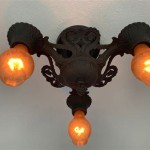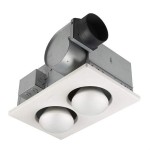Lighting Design for Ceilings: A Comprehensive Guide
Lighting design plays a crucial role in creating the ambiance and functionality of any interior space. When it comes to ceilings, careful consideration of lighting fixtures and techniques can enhance the architectural features, set the mood, and improve the overall user experience.
Types of Ceiling Light Fixtures
Recessed Lights: These lights are recessed into the ceiling, providing a clean and elegant look. They can be used for general lighting or to accentuate specific areas.
Pendant Lights: Suspended from the ceiling, pendant lights create a decorative element. They can be used to provide ambient light or to focus illumination on specific areas.
Track Lighting: A flexible lighting system that allows for adjustable light placement. Track lights are ideal for highlighting artwork, architectural features, or for creating a dynamic light pattern.
Lighting Techniques
Uplighting: Used to create a sense of height and drama. Uplights are placed near the base of the ceiling and directed upwards to illuminate the ceiling surface.
Downlighting: Provides focused illumination from the ceiling downwards. Downlights are suitable for general lighting or to highlight specific areas.
Cove Lighting: Creates a soft and diffused light. Cove lights are hidden behind a ledge or recess along the perimeter of the ceiling, casting light both upward and downward.
Functional Considerations
Ceiling Height: The height of the ceiling dictates the choice of lighting fixtures and techniques. High ceilings allow for more dramatic lighting options, while low ceilings require more subtle approaches.
Room Purpose: The function of the room should influence the lighting design. For example, a living room may require a warmer and more ambient light, while a kitchen or bathroom needs brighter and more functional lighting.
Aesthetic Considerations
Style: The style of the interior design should be reflected in the lighting design. Traditional interiors may benefit from ornate chandeliers, while modern spaces may prefer sleek and minimal fixtures.
Color: The color of the ceiling and surrounding walls can impact the overall lighting effect. Light-colored surfaces reflect more light, while dark colors absorb more, creating a more intimate ambiance.
Conclusion
Lighting design for ceilings is an integral part of creating a functional and aesthetically pleasing interior space. By carefully selecting fixtures and techniques, and considering factors such as ceiling height, room purpose, and aesthetic considerations, you can create an ambiance that enhances the architectural features and sets the desired mood.

A Comprehensive Guide To The Best Ceiling Lights Designs For Your Home

9 Ceiling Light Designs For Home 2024

45 Ceiling Lights Ideas For Home Office

Top 3 Ideas To Light Up Your Ceiling Saint Gobain Gyproc

Top 3 Ideas To Light Up Your Ceiling Saint Gobain Gyproc

False Ceiling Strip Light Design For Modern Homes

9 Types Of False Ceiling Light Designs To Glam Up Your Home

False Ceiling Lighting Photos Designs Ideas

Low Ceiling Lighting Ideas For Your Home Designcafe
Planning Your Ceiling Lighting Design Architecture
Related Posts








